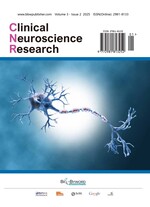A Real-world Study of the Adverse Effects of Tizanidine Based on Mining the FAERS Database
Abstract
Objective: Tizanidine is a medication commonly used to relieve muscle spasms and has a wide range of clinical applications. However, as its use has increased, reports of related adverse reactions have also risen. In-depth analysis of tizanidine’s adverse reaction patterns and potential safety risks through data mining is of great significance for guiding clinical decision-making and patient management. Methods: This study is based on the FAERS database, retrieving data from 2004 Q1 to 2025 Q1. The primary suspect drug was grouped, and the proportional imbalance method (ROR method) was used for signal detection of adverse drug events. Results: The adverse reactions of tizanidine are diverse and involve multiple systems, with nervous system diseases being the most common type of adverse event, accounting for 16.18% of the total reports. The proportion of adverse events reported by female and elderly patients is relatively high, and in terms of the outcome of adverse events, the proportion of hospitalizations is high, accounting for 30.31%, indicating a significant likelihood that tizanidine’s adverse events require hospitalization. Additionally, hypotension, drowsiness, drug ineffectiveness, and completed suicide are common adverse events, suggesting that the medication can cause significant central nervous system, cardiovascular, and mental health-related issues during its use. Signal mining using the ROR method shows high ROR values for adverse events such as potassium-losing nephropathy and decerebrate rigidity, indicating a potential causal relationship with tizanidine usage. Furthermore, the median time to the occurrence of adverse events after administration is 3 days, revealing that tizanidine-related adverse events often manifest shortly after administration, particularly within the first few days. Conclusion: The potential adverse reactions of tizanidine in clinical use, particularly those related to the nervous system, mental health, and cardiovascular aspects, warrant significant attention. Enhanced drug safety monitoring, especially individualized treatment and close monitoring in high-risk patient groups, can maximize the safety of medication use.
References
Rudolph A, Dahmke H, Kupferschmidt H, et al., 2021, Coadministration of Tizanidine and Ciprofloxacin: A Retrospective Analysis of the WHO Pharmacovigilance Database. European Journal of Clinical Pharmacology, 77(6): 895–902. https://doi.org/10.1007/s00228-020-02981-2
Giannouchos TV, Gomez-Lumbreras A, Malone DC, 2022, Risk of Tizanidine-induced Adverse Events after Concomitant Exposure To Ciprofloxacin: A Cohort Study in the U.S. The American Journal of Emergency Medicine, 2022(55): 147–151. https://doi.org/10.1016/j.ajem.2022.03.008
Dai AI, Aksoy SN, Demiryurek AT, 2016, Comparison of Efficacy and Side Effects of Oral Baclofen Versus Tizanidine Therapy with Adjuvant Botulinum Toxin Type A in Children with Cerebral Palsy and Spastic Equinus Foot Deformity. Journal of Child Neurology, 31(2): 184–189. https://doi.org/10.1177/0883073815587030
Morgom M, Sabir DM, Elbashir H, et al., 2023, A Case of Tizanidine Withdrawal Syndrome: Features and Management in the Emergency Department. Cureus, 15(11): e49248. https://doi.org/10.7759/cureus.49248
Morgom M, Anjum S, Elgassim MA, et al., 2024, Emergency Response to Tizanidine Overdose: A Case Report on Critical Care Strategies. Cureus, 16(10): e70696. https://doi.org/10.7759/cureus.70696
Amino M, Yoshioka K, Ikari Y, et al., 2015, Long-term Myocardial Toxicity in a Patient with Tizanidine and Etizolam Overdose. Journal of Cardiology Cases, 13(3): 78–81. https://doi.org/10.1016/j.jccase.2015.10.009
Frascarolo S, Moutinot B, Sartori C, 2021, Focus on Tizanidine in Primary Care Medicine. Revue Médicale Suisse, 17(746): 1374–1376.
Nair A, Rangaiah M, Borkar N, 2023, Efficacy and Safety of Oral Tizanidine Premedication as Pre-emptive Analgesia in Adult Patients Undergoing Elective Surgeries: A Systematic Review. Saudi Journal of Anaesthesia, 17(2): 214–222. https://doi.org/10.4103/sja.sja_780_22
Setzer K, Baldwin N, Mersfelder T, et al., 2025, Profound Hypotension Following Concomitant Administration of Tizanidine and Lisinopril. BMJ Case Reports, 18(2): e262982. https://doi.org/10.1136/bcr-2024-262982
Zhu LL, Wang YH, Zhou Q, 2024, Tizanidine: Advances in Pharmacology & Therapeutics and Drug Formulations. Journal of Pain Research, 2024(17): 1257–1271. https://doi.org/10.2147/JPR.S461032
Bader D, Adam A, Shaban M, et al., 2021, Pediatric Tizanidine Toxicity Reversed with Naloxone: A Case Report. International Journal of Emergency Medicine, 14(1): 73. https://doi.org/10.1186/s12245-021-00397-y
Killam-Worrall L, Brand R, Castro JR, et al., 2024, Baclofen and Tizanidine Adverse Effects Observed Among Community-Dwelling Adults Above the Age of 50 Years: A Systematic Review. The Annals of Pharmacotherapy, 58(5): 523–532. https://doi.org/10.1177/10600280231193080
Su Zhang VR, Niu F, Lee EA, et al., 2023, Safety of Baclofen Versus Tizanidine for Older Adults with Musculoskeletal Pain. Journal of the American Geriatrics Society, 71(8): 2579–2584. https://doi.org/10.1111/jgs.18349
Goyal L, Mallick D, Zapata MR, et al., 2022, Tizanidine Toxicity from Ciprofloxacin: A Cautionary Tale. Cureus, 14(12): e32492. https://doi.org/10.7759/cureus.32492

